 W
WAlfred the Gorilla arrived at Bristol Zoo, England, in 1930 and became a popular attraction and animal celebrity. His fame grew to international proportions during World War II and after his death he remained an important mascot for the city of Bristol.
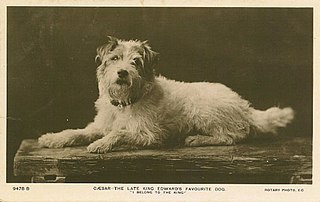 W
WCaesar (1898–1914) was a Wire Fox Terrier owned by King Edward VII. He was bred in the kennels of Kathleen, Duchess of Newcastle, and became the constant companion of the King. After the King's death in 1910, the dog attended the funeral and walked in the procession in prominence ahead of nine kings and other heads of state. Caesar has been the subject of paintings, and a hand crafted hardstone model created by the House of Fabergé.
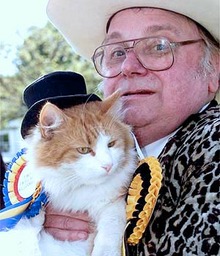 W
WCatmando was a cat and United Kingdom politician who served as joint leader of Britain's Official Monster Raving Loony Party (OMRLP) from 1999 to 2002, along with his owner, Howling Laud Hope. He is the only cat ever to have been leader of a political party.
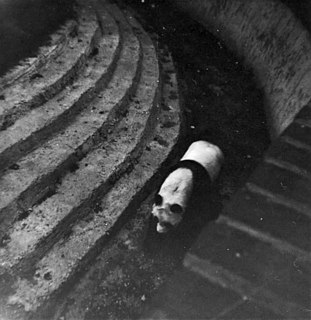 W
WChi Chi was a well-known female giant panda at London Zoo in England.
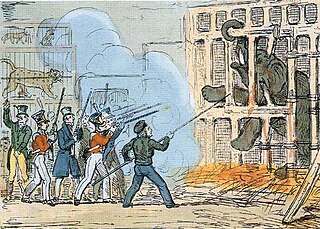 W
WChunee was an Indian elephant who was brought to Regency London in 1811.
 W
WThe Craven Heifer (1807–1812) was a cow which lived in the early 19th century, and to this day remains the largest cow ever shown in England: weight 2,496 lb (1,132 kg), length nose to tip of rump 11.3 ft (3.4 m), height at the shoulder 5.3 ft (1.6 m), thickest girth 10.1 ft (3.1 m)
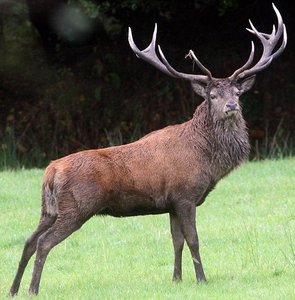 W
WThe Emperor of Exmoor, a red stag, was reportedly killed in October 2010. Its weight has been estimated as over 300 pounds (136 kg) and its height at 9 feet (2.7 m). Red deer on Exmoor National Park are larger than red deer in Scotland owing to their diet.
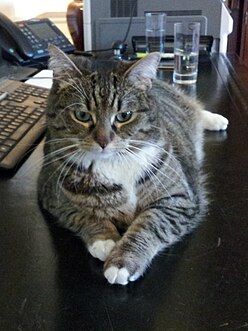 W
WFreya is a tabby cat owned by the former Chancellor of the Exchequer of the United Kingdom George Osborne and his family.
 W
WGladstone is the resident Chief Mouser of HM Treasury at Whitehall, London. He is a domestic short-haired cat, who, at eighteen months old, assumed the position of Chief Mouser in late June 2016. Gladstone's political namesake is former Chancellor and Prime Minister William Ewart Gladstone who served for four separate periods, more than any other Prime Minister. The hope is Gladstone will control mice at the Treasury's 1 Horse Guards Road building.
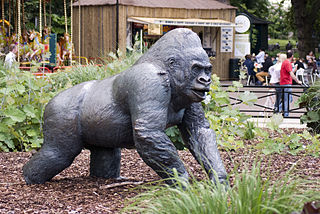 W
WGuy the Gorilla (1946–1978) was a western lowland gorilla who was London Zoo's most famous resident and often profiled on children's TV shows and natural history productions. The exact day of Guy's birth was unknown, but the official birthday was set by the Zoo as May 30, and he received large numbers of cards each year.
 W
WThe Hexham wolf was a grey wolf that escaped from a zoo and killed livestock in Hexham and Allendale, Northumberland during the winter of 1904. Conflicting reports label it as being either "black and tan" or "dun", although it was largely reported as being large and male.
 W
WHodge was one of Samuel Johnson's cats, immortalised in a characteristically whimsical passage in James Boswell's Life of Johnson.
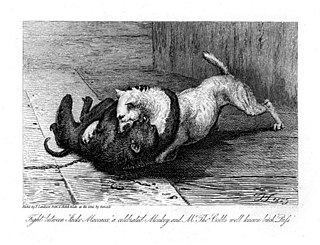 W
WJacco Macacco was a fighting ape or monkey who was exhibited in monkey-baiting matches at the Westminster Pit in London in the early 1820s. He achieved some measure of fame among the sporting community through his reputed prodigious record of victories against dogs, but was brought to wider attention by depiction in popular literature, artworks and by citation in speeches to Parliament by the animal welfare campaigner Richard Martin. Jacco's most famous fight, against the equally well-known bitch Puss, seems to have marked the end of his career: he may have died as a result of injuries received during the match or of an unrelated illness sometime afterwards. His ashes are housed at the True Crime Museum in Hastings, East Sussex.
 W
WLady Jane, known as Jenny, was an orangutan kept in captivity in London Zoo between November 1837 and her death in May 1839. She was the first of her species at the Zoo and is remembered for her meeting with the naturalist Charles Darwin who compared her reactions to those of a human child. The experience reinforced Darwin's view that human beings were "created from animals". He wrote in his notebook that after meeting an animal like Jenny, no man could "boast of his proud preeminence".
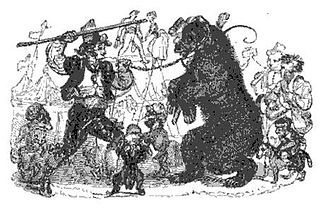 W
WOld Martin was a large grizzly bear given in 1811, when already full-sized, to George III by the Hudson's Bay Company. The bear was sent to the Royal Menagerie, housed at the Tower of London. Although this was the first grizzly bear in England, the king said he would rather have had been given a new tie or a pair of socks. The Royal Menagerie was closed in 1831 or 1832 by the Duke of Wellington, the governor of the Tower. The bear and other animals were moved to the new London Zoo in Regent's Park – Old Martin died there in 1838.
 W
WNico was a western lowland gorilla who lived in captivity at Longleat Safari Park, Wiltshire, UK. At the time of his death, at 56 years old, he was the oldest Western lowland gorilla in Europe and was thought to be the second oldest gorilla in the world. Nico's habitat on Half Mile Lake at Longleat covered over half an acre and included lookout stations, tree trunk climbing frames and tyre and net swings.
 W
WRufus the Hawk is a Harris's Hawk used by the All England Lawn Tennis and Croquet Club to keep pigeons away from their venue. Described as an "important member of the Wimbledon family", Rufus has been scaring away the birds for fifteen years, taking over from the previous hawk, Hamish.
 W
WThe Tamworth Two were a pair of pigs that escaped while being unloaded from a lorry at an abattoir in the English town of Malmesbury, Wiltshire in January 1998. The pigs were on the run for more than a week, and the search for them caused a huge media sensation, as well as immense public interest, both in Britain and abroad.
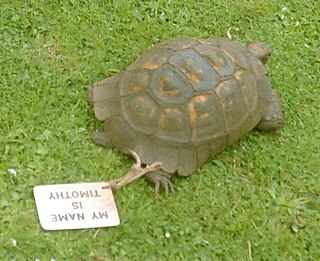 W
WTimothy was a 5 kg (11 lb) Mediterranean spur-thighed tortoise that was thought to be about 160 years old at the time of her death. This made her the UK's oldest known resident. In spite of her name, Timothy was female; how to sex tortoises was not properly known in the 19th century. Timothy was named after a tortoise owned by Gilbert White.
 W
WTrump was a pug owned by English painter William Hogarth. The artist included the dog in several works, including his 1745 self-portrait Painter and his Pug, held by the Tate Gallery. In the words of the Tate's display caption, "Hogarth's pug dog, Trump, serves as an emblem of the artist's own pugnacious character."
 W
WWinnipeg, or Winnie, was the name given to a female black bear that lived at London Zoo from 1915 until her death in 1934. Rescued by cavalry veterinarian Harry Colebourn, Winnie is best-remembered for inspiring A. A. Milne's character, Winnie-the-Pooh.